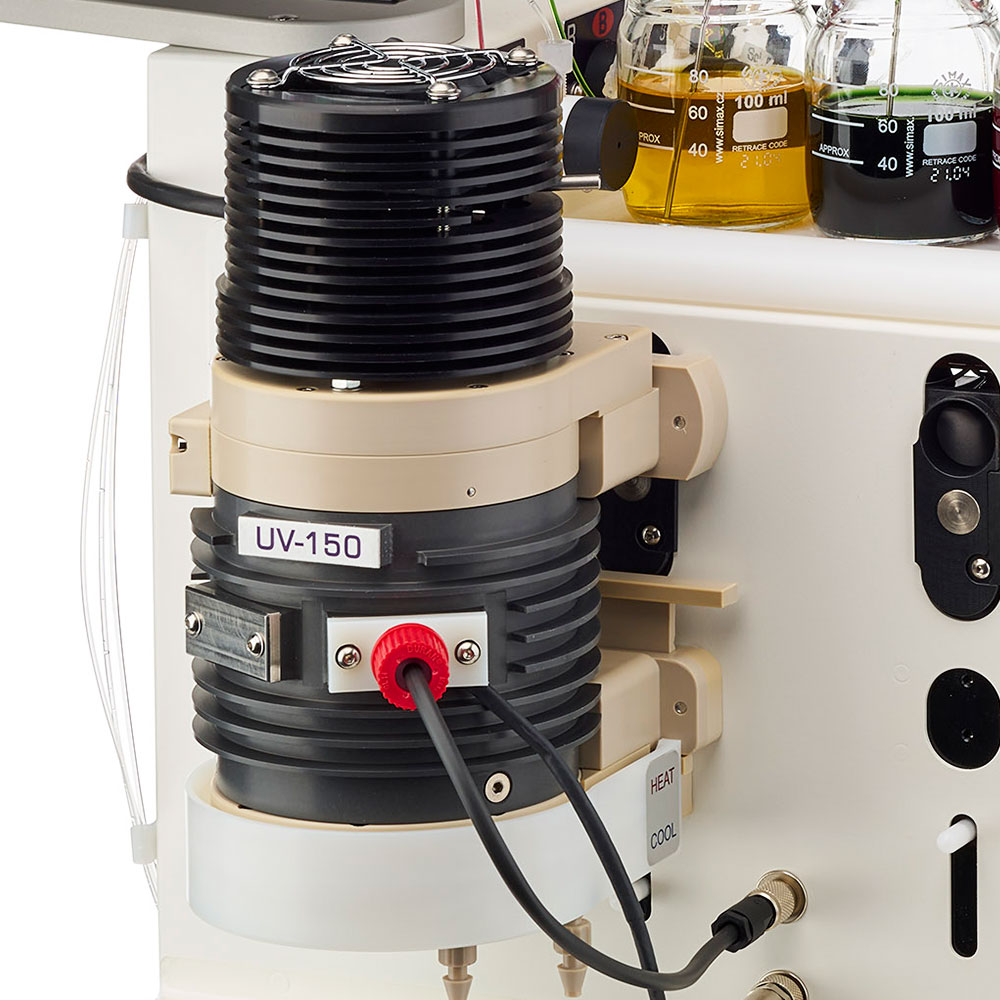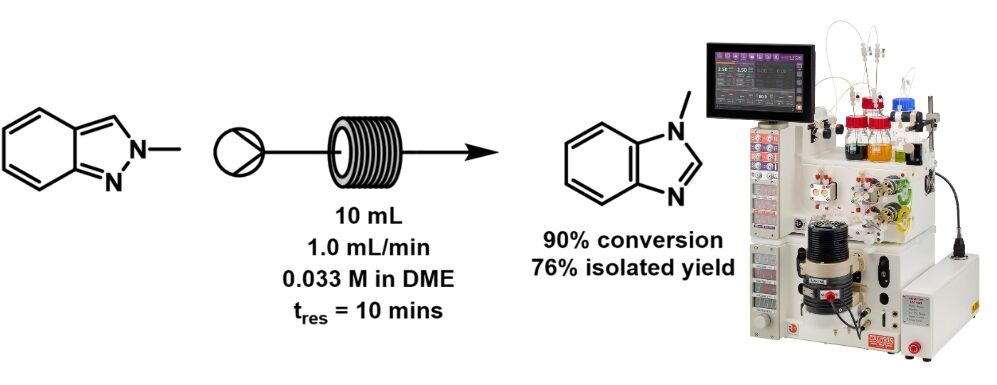
Date: 15 August 2025 | Category: News
Authors: G. Logan Bartholomew, Sojung F. Kim, Yusuke Oyamada, Federica Sbordone, Joshua A. Carroll, Justin E. Jurczyk, Charles S. Yeung*, Christopher Barner-Kowollik*, Richmond Sarpong*
The Sarpong group at UC Berkeley, in conjunction with the Barner-Kowollik group at Queensland University of Technology and Karlsruhe Institute of Technology, Gilead Sciences and Merck have reported the transformation of indazoles to benzimidazoles using a N–C transposition under UVB radiation. Reactions proceed in up to 98% yield, without the need for specialized air- or moisture-free environments, Figure 1 [1].
Late-stage molecular diversification
The ability to alter scaffolds late-stage in a pharmaceutical campaign is an extremely useful way of accessing new chemical space and synthesizing new chemical libraries. “Single-atom skeletal edits” of nitrogen-based heterocycles are gaining traction as an opportunity to exploit the reactivity of one heterocycle series, before the conversion to another [2]. Predominant focus in the skeletal editing space has been on topological changes and using ring expansions or contractions to convert between heterocycle types. This work describes transmutative skeletal edits, a relatively underexplored area, where one atom type is replaced by another, or two atoms have switched positions [1]. As a result, this provides a powerful tool for retaining the overall shape of the original molecule, whilst presenting different exit vectors for substrate binding.
Photochemical skeletal editing
Although the ability to undertake photomediated skeletal editing has been known for over 50 years [3, 4], yields were often poor and substrate scopes were narrow, hindering their further development. Recent advancements in flow chemistry and its application to photochemistry have likely contributed to the recent explosion in photochemical reactions across a diverse breadth of applications. Photochemistry not only unlocks new synthetic potential, but also offers significant advantages, such as careful control of reaction conditions, variation in light sources available and control over the power of light. By running photoreactions in flow, light is more uniformly distributed with improved irradiation, enhancing the scalability of these reactions.
Phototransposition of 2H-indazoles
In this work, it was noted that the concentration of the reaction was important, with increasing reaction concentration leading to decreased yields in batch. At the N2 position, a broad range of alkyl substituents performed well, including isopropyl, tert-butyl, and cyclohexyl groups, with steric hinderance also well-tolerated. However, high electron density at N2 was a suspected requirement. At C3, heteroatomic, aryl, and carbonyl substituents were not tolerated but alkyl substituents were, and it was proposed that while steric bulk is not an issue, subtle electronic effects can influence the reactivity of the indazole core.
The use of the Vapourtec R-Series and UV-150 photochemical reactor was invoked for a 1.0 gram scale-up of the transposition reaction (Figure 2). The reaction mixture (0.033 M in DME) was recirculated at ambient temperature at a rate of 1.0 mL/min, corresponding to a 10-minute residence time. After 24 turnovers, 90% conversion was achieved with an isolated yield of 76%. Interestingly, at a higher concentration of 0.1 M the photochemical efficiency decreased, and 70 solvent turnovers were required to achieve a conversion of 80% and isolated yield of 65%.
Summary
The use of photochemistry within organic synthesis is having a renaissance. In this case, the Vapourtec R-Series and UV-150 photochemical reactor were used in combination to scale-up a late-stage N–C transposition under UVB radiation while maintaining good yield and conversion. Key features of the flow chemistry set-up include:
- Fine control over photochemical reaction conditions through varying the light sources within the module.
- Facile tuning of reaction conditions and exposure to light through adjustment of flow rates or recirculation.
- The ability to switch between LEDs or an Hg-lamp.
References:
[1] Phototransposition of Indazoles to Benzimidazoles: Tautomer-Dependent Reactivity, Wavelength Dependence, and Continuous Flow Studies. (G. L. Bartholomew, S. F. Kim, Y. Oyamada, F. Sbordone, J. A. Carroll, J. E. Jurczyk, C. S. Yeung, C. Barner-Kowollik, R. Sarpong, Angew. Chem. Int. Ed., 2025, ASAP). https://doi.org/10.1002/anie.202423803
[2] The importance of synthetic chemistry in the pharmaceutical industry. (K. R. Campos, P. J. Coleman, J. C. Alvarez, S. D. Dreher, R. M. Garbaccio, N. K. Terrett, R. D. Tillyer, M. D. Truppo, E. R. Parmee, Science 2019, 363, 0805). https://doi.org/10.1126/science.aat0805; Single-atom logic for heterocycle editing. (J. Jurczyk, J. Woo, S. F. Kim, B. D. Dherange, R. Sarpong, M. D. Levin, Nat. Synth 2022, 1, 352–364). https://doi.org/10.1038/s44160-022-00052-1; Skeletal Editing of Pyrimidines to Pyrazoles by Formal Carbon Deletion. (G. L. Bartholomew, F. Carpaneto, R. Sarpong, J. Am. Chem. Soc. 2022, 144, 22309–22315). https://doi.org/10.1021/jacs.2c10746
[3] The photoisomerization of 1,4,5-trimethylimidazole and 1,3,5-trimethylpyrazole. (P. Beak, J. L. Miesel, W. R. Messer, Tetrahedron Letters 1967, 8, 5315–5318). https://doi.org/10.1016/S0040-4039(01)89669-6
[4] Photoisomerisierung von Pyrazolen und Indazolen zu Imidazolen bzw. Benzimidazolen und 2-Amino-benzonitrilen. (H. Tiefenthaler, W. Dörscheln, H. Göth, H. Schmid, Helvetica Chimica Acta 1967, 50, 2244–2258). https://doi.org/10.1002/hlca.19670500810


